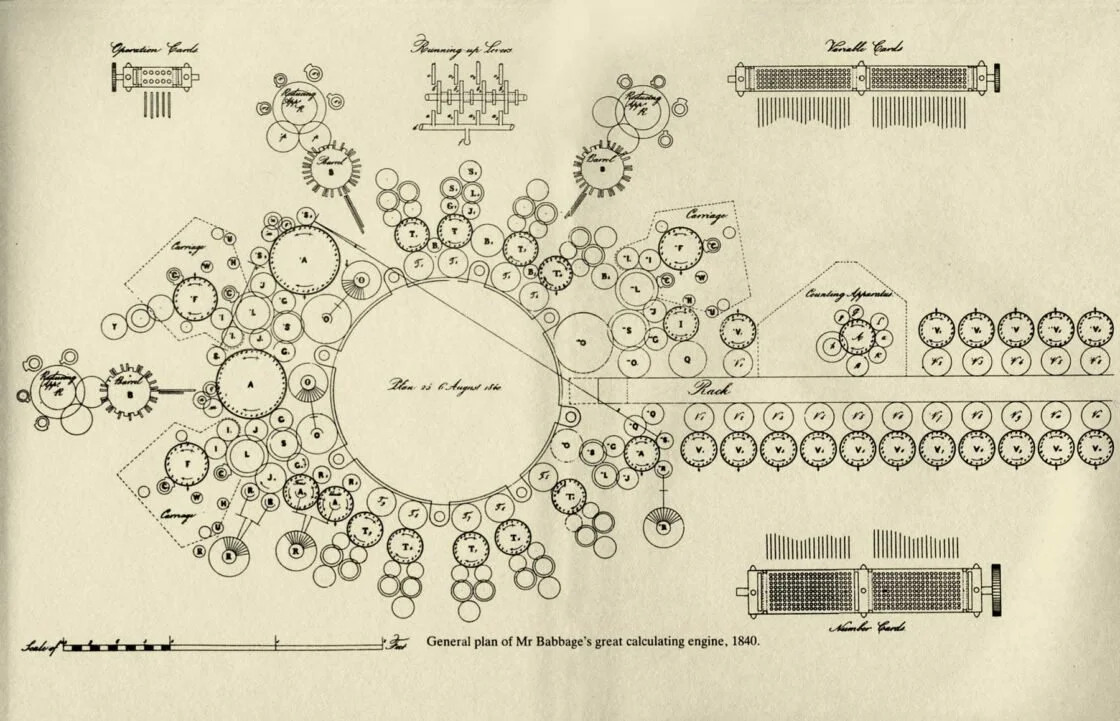Analytical Engines -The Original Computer
The Analytical Engine, designed by English mathematician Charles Babbage, marks the first electronic machine to introduce the concept of a general-purpose computer. Although the term “computer” dates back to the 1600s, in The Hesperus Prophecy the roomful of electronic data collection, analysis, and storage machines is known as the Analytical Engine Room, an homage to Babbage’s paradigm-shifting ideas.
Building upon the Jacquard Loom’s innovation of using punch cards to store information, the Analytical Engine’s punch cards performed functions like addition, subtraction, multiplication, and division. Cogwheels represented numbers, and the Analytical Engine’s mechanical computer completed the arithmetic.
Babbage first described the Analytical Engine in 1837, but was never able to build it due to funding issues and personality differences with his engineers. Ada Lovelace, Babbage’s contemporary and daughter of poet Lord Byron, recognized the importance of the Analytical Engine beyond simple equations, proposing ways the machine could solve complex algebraic expressions, making her the first computer programmer.
Despite never being built, the Analytical Engine marks the transition to general-purpose computation, establishing the core principles of modern programming. Babbage was so ahead of his time, it would be another century before Konrad Zuse, and teams at U Penn and MIT, make the next leaps in computing (see Early Computers).
Model of the Analytical Engine
Babbage’s Designs for the Analytical Engine
Ada Lovelace, mathematician and the first computer programmer.


